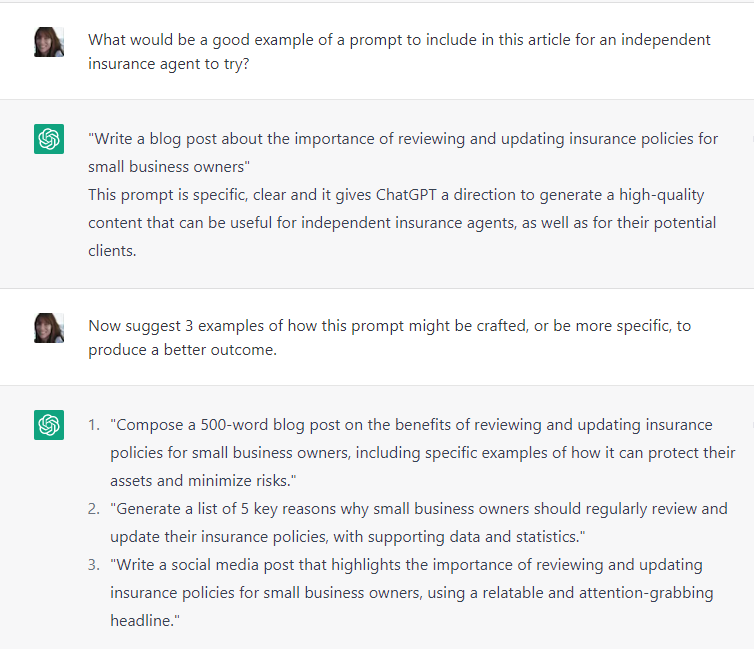Kaizen is a Japanese philosophy that focuses on continuous improvement and change for the better. It is best known as a central principle of the Toyota Production System and aims to make small changes to improve processes and outcomes over time. This approach can be applied to independent insurance agencies, relative to operational efficiency and customer service. The goal is to foster a culture of continuous improvement within the agency, where everyone is encouraged to identify areas for improvement and take action to make changes. This may include utilizing new technologies, streamlining processes, and providing proactive and responsive client support.
For an independent insurance agent, content marketing is one of the leading ways to reach and engage with clients and potential clients. But creating high-quality content can be a challenge when you’re busy servicing clients, writing policies, and managing an insurance agency.
ChatGPT is a new artificial intelligence (AI) based tool that can help make the content creation process easier for independent insurance agencies. Developed by OpenAI, ChatGPT uses natural language processing (NLP) technology that can generate human-like text based on a specific input. If used correctly, it can help agencies create blog posts, social media updates, insurance FAQs, customer service scripts, and email campaigns.
A Word of Caution
While ChatGPT can be extremely helpful for the time-constrained independent agent, it does have its limitations. Because ChatGPT relies on artificial intelligence and is limited in its understanding of natural language, it may not be able to handle complex requests, leading to inaccurate responses. While AI-assisted content creation is a powerful tool, it is unable to replicate the creativity of a human content creator, so be sure to add your agency brand’s voice, or teach ChatGPT your writing style by providing samples and request that the same style be applied.
Best Practices for Using ChatGPT
ChatGPT is a powerful tool, but it’s important to use it correctly in order to get the most out of it. Here are some best practices to keep in mind:
- Phrase your prompts clearly and specifically. The more detailed your prompts, the more specific and accurate the generated content will be. For example, instead of saying “Write a blog post about insurance,” say “Write a blog post about the benefits of umbrella insurance for small business owners.”
- Review and edit the generated content carefully. While ChatGPT can generate high-quality content, it’s not always perfect. It’s important to review the generated content for accuracy, grammar, and style. Make sure to check the facts and make any necessary revisions.
- Verify the information provided by ChatGPT. Because ChatGPT is trained on a massive dataset of internet text, it may not have the most up-to-date information. Therefore, it is important to verify any information provided by ChatGPT before publishing it.
AI and the IA
We asked ChatGPT to help generate an example for the purposes of this article:
 ChatGPT was able to generate this content in seconds. The key is to ask ChatGPT the right question in order to generate the response you want, and this does take some practice. To create unique content that will stand out, try using very specific and narrow prompts with a well defined audience.
ChatGPT was able to generate this content in seconds. The key is to ask ChatGPT the right question in order to generate the response you want, and this does take some practice. To create unique content that will stand out, try using very specific and narrow prompts with a well defined audience.
As of now, ChatGPT is available at no charge while it is still in beta, but that will likely change. Users must first sign up for an account by visiting chat.openai.com.
Check out our Media and Insights page for more helpful articles for independent insurance agencies
